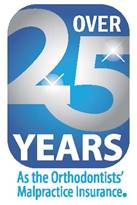You are here
The Orthodontists' Guide to Malpractice Insurance
You specialize in creating beautiful, healthy smiles. And you are great at it. But sometimes a patient will think you made a mistake—whether it is true or not. Either way, it can put you at risk of being sued.
Created by orthodontists, for orthodontists®, AAOIC Malpractice insurance was created to help protect those in the orthodontic profession. It is the only kind of coverage we offer, so it is our specialty. And you can be sure we are always looking out for your best interests like no other insurance company. AAOIC offers both claims-made and occurrence malpractice coverage designed for orthodontists. So, what is the difference?
Occurrence vs. Claims-Made Policies:
An occurrence policy provides protection for any covered incident that occurs during your policy period regardless of when the claim is made.
A claims-made policy provides protection for any covered incident when both the incident and the resulting claim occur while your policy is/was in force.
When is an occurrence policy the best choice?
Occurrence coverage is best for people who want or need flexibility. Maybe you dream of traveling the world and want the option of taking an extended amount of time off from practice to do so. Or you may be a new graduate planning to go to work for someone and then move on in a year or two. Perhaps you plan to be a stay-at-home parent while you raise your children.
In addition, maternity benefits are available for those planning to return to work soon after childbirth with both occurrence and claims-made policies.
Whatever your reason may be, if you plan on taking extended time off work or retiring before age 50, an occurrence policy may be best for you. As a reminder, tail coverage is never needed with an occurrence policy.
When is a claims-made policy the better choice?
Claims-made coverage is usually less expensive than occurrence coverage for the same policy limits. With AAOIC claims-made policies, “tail coverage” is always free in the event of death or disability; it is also free at retirement if you are age 50 or older and have been insured with AAOIC for four consecutive years. However, you may need to purchase tail coverage if you retire before those conditions are met.
Although tail coverage is seldom needed, even if you do have to purchase it, on average, most insureds come out ahead with a claims-made policy in about eight years. And if you practice continuously until retirement, you will almost always pay less over the long term for a claims-made policy versus an occurrence policy.
Is there any difference in coverage between Claims Made and Occurrence if I get Sued?
There is no difference in the defense of your claim whether you have a Claims Made policy or Occurrence.
Are special discounts available?
New or soon-to-be graduates can purchase a $25 occurrence policy in their first year of practice. And, if the AAOIC plan is the first policy purchased right after graduation, they can also qualify for additional discounts in their second or third year. A $25 claims-made policy is also available. * There are other ways to save, too, like our dividend credit (Although dividends are not guaranteed, AAOIC has declared a dividend 13 out of the last 15 years). We also offer a discount for taking our risk management course; now available online and best of all, it is free!
Those who already have malpractice coverage may also end up saving money by switching to the AAOIC plan because it is typically less expensive than competitor’s malpractice insurance. Check this chart for more details.
Do you still need help determining the best fit?
Visit aaoicplans.com/Malpractice for more information or to speak to the representative in your area.
No matter which coverage is right for you, AAOIC has you covered!
*Does not include the $20 Capital Contribution. Indiana and Louisiana Patient Compensation Funds are added to the premium. Additional insured coverage is added for the greater of $25 or 10%. Additional coverage for an owned business entity is the greater of $25 or 5% for shared limits, or $25 or 10% for additional limits. Higher policy limits will disqualify the new graduate credits from being applied. All past claims and coverage history are reviewed, and coverage is not guaranteed to all individuals. These offers are not available in some counties.



